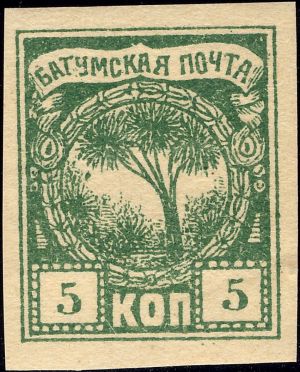Click any image to enlarge
The transfer block was produced with 4 stamps in a 2 x 2 format. The four types are called A, B, C, and D. The main identifying features of each type are illustrated below. ----------- The main identifying features common to all four types are (1.) Six dots over the right hand value tablet. (2.) The third branch of the aloe tree counting from the left is straight and leans to the left. (3.) There are 3 vertical lines of shading after the "A" of Noyta in the top banner. (4.) There are 3 rather distinct folds in the ribbon dropping down from the top banner on the right side. (5.) The circle at the bottom of these folds is quite fully shaded and has thick lines. It does not touch the inner circle around the aloe tree to the left.
Batum Genuine« Back1919, Batum, Scott #1, Type A, Genuine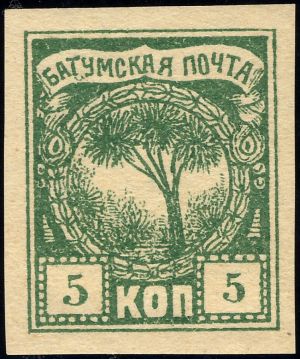
(1.) There is a "W" shaped mark between "T" and "Y" of BATYMCKAR in the top banner. (2.) Exp: do. Ref: L.Martin 1919, Batum, Scott #1, Type B, Genuine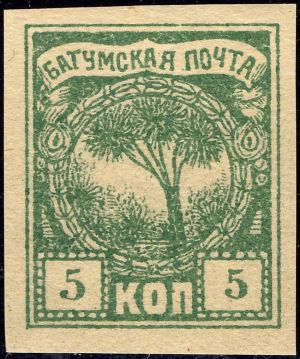
(1.) Dot between "A" and "R" of BATYMCKAR. (2.) Dot left of the aloe tree trunk. (3.) Dot inside the left "5". (4.) Dot under the right "5". (5.) Exp: do. Ref: L.Martin 1919, Batum, Scott #1, Type C, Genuine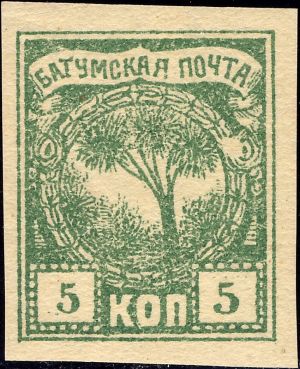
(1.) Dot to the left of the aloe tree trunk, and another between the 2nd and 3rd branches from the right. (2.) Two dots below and left of the end of the "5" in the left value tablet. (3.) 3 to 6 short lines or dots over "5" in the right value tablet. (4.) Exp: do. Ref: L.Martin. |
Batum ForgeryForgery of Batum #1, Type I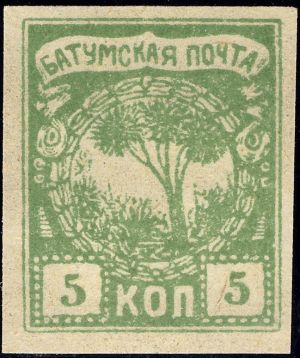
(1.) Seven dots over the right hand value tablet. (2.) The third branch from the left curves straight up. 3.) There are only two vertical lines of shading (which sometimes touch each other) after the "A" of Noyta in the top banner. (4.) There are only two very indistinct folds in the ribbon hanging down from the top banner on the right side. (5.) Exp: do. Ref: F.Aretz. Forgery of Batum #1, Type II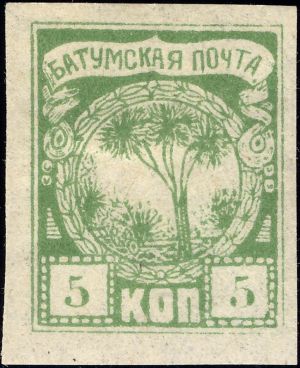
(1.) Seven dots over the right hand value tablet. (2.) The third branch from the left curves straight up. (3.) There are no vertical lines of shading after "A" of Noyta. (4.) There is a period after "A" of Noyta below the right leg. (5.) The ribbon hanging down from the top banner on the right side has three folds but it is not shaped or shaded like the genuine. (6.) The circle at the bottom of this ribbon appears to be wider than the genuine, touches the inner circle around the aloe tree to the left, is not fully shaded, and has thinner lines. (7.) Exp: do Ref: F. Aretz |
